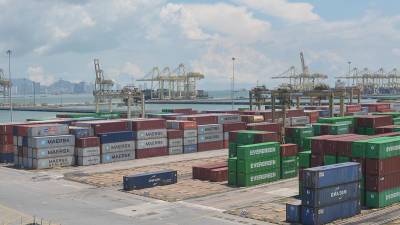PETALING JAYA: The recent announcement of a reduction in the tariff rate on Malaysian exports to the US, from 25% to 19%, has been portrayed as a major trade win.
However, economist Dr Geoffrey Williams has raised concerns over the anticipated benefits of the 6% reduction in import levy for Malaysian goods going into the US.
Williams told theSun the tariff reduction only puts Malaysia on a level playing field with Indonesia and the Philippines.
He added that the new tariff of 19% accords Malaysia an only marginally better position when stacked against major exporter Vietnam.
He compared Malaysia’s rate to other countries such as Japan, Korea, the United Kingdom and the European Union, which received bigger reductions.
“Overall, it is just a marginally better position but it still hits Malaysian exports hard. If it causes just a 10% reduction in exports to the US, it will cost RM20 billion. This is RM670 for every Malaysian.”
Malaysia joins peers such as Indonesia, Cambodia, Pakistan and the Philippines at the same tariff rate, while rates on other countries range between 10% and 41%.
Williams said Malaysians need to understand what concessions were demanded by the US and what was refused by Malaysia.
He foresees business groups calling for government help and support.
“But this will only increase costs to the government, which may redirect subsidy savings to business bailouts.
Malaysian Palm Oil Council chief executive officer Belvinder Kaur Sron said the 19% tariff would inevitably have some cost implications for US palm oil importers.
However, she does not anticipate any significant impact on Malaysia’s overall palm oil exports to this market.
“Most of Malaysia’s exports to the US cater to niche, high-value segments.”
Belvinder said in the first half of 2025, over 80% of Malaysia’s palm oil exports to the US were certified sustainable palm oil and used in high value-added applications.
“Additionally, 11% comprised palm stearin, a key ingredient in food manufacturing and personal care products. These products cater to specialised segments where substitute options are limited, making overall demand relatively inelastic.”
She said palm oil exports to the US rose by 35.7% in the first half of 2025, reaching 103,000 metric tonnes compared with 76,000 metric tonnes in the same period last year.
“Malaysia and Indonesia accounted for 97% of palm oil imports into the US in 2024.
“Since both countries are currently subject to the same import tariff of 19%, we continue to compete on a level playing field.”
Malaysia Semiconductor Industry Association executive director Andrew Chan said semiconductors are currently excluded from the 19% country tariff, pending a Section 232 review of the US Trade Expansion Act 1962.
“Most electrical and electronic exports to the US, primarily intermediate goods, also fall outside the 19% tariff.
“Although the 19% rate is not the best we could have hoped for, it’s also not the worst.”
Chan said with details of the negotiations still unclear, it’s hard to know what Malaysia may have offered or refused in exchange.
